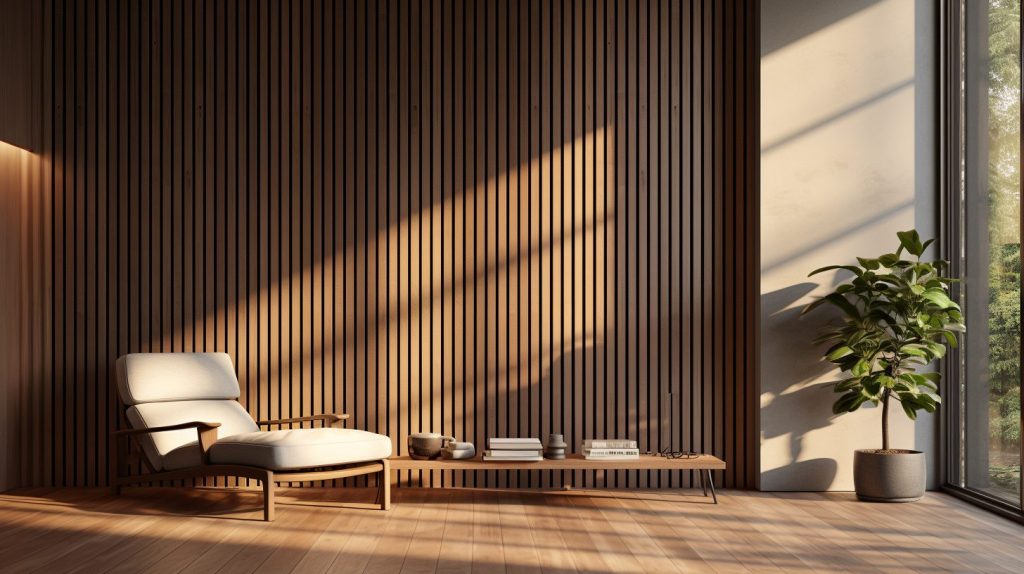When designing a space that requires sound optimization, choosing the best acoustic panels is essential. Whether you’re setting up a home theater, a music studio, or simply looking to reduce noise in your living room or office, the right acoustic panels can make a significant difference in sound quality and comfort.
What Are the Best Acoustic Panels?
Acoustic panels are specially designed structures that absorb sound waves, reduce echoes, and enhance the overall acoustics of a room. To choose the best acoustic panels for your space, it’s important to consider their material, design, and placement.
Key Features of the Best Acoustic Panels:
- High-Quality Materials: Panels made of dense, porous materials like mineral wool or foam are highly effective in sound absorption.
- Aesthetic Appeal: Modern panels come in a variety of colors and styles, ensuring they complement your room’s design.
- Versatile Installation: The best acoustic panels are easy to mount on walls or ceilings, giving flexibility in setup.
Key Benefits of Using the Best Acoustic Panels
Acoustic panels are more than just aesthetic additions; they are functional investments that improve sound quality and reduce unwanted noise. Here’s why selecting the best acoustic panels is crucial:
- Improved Sound Clarity: The best acoustic panels absorb unwanted sound reflections, enhancing clarity in music, speech, or entertainment systems.
- Noise Reduction: Whether in an office or home, acoustic panels minimize background noise, making conversations and tasks more manageable.
- Enhanced Comfort: For spaces where sound quality matters, such as conference rooms or home theaters, acoustic panels provide a more immersive experience.
| Benefits | Description |
|---|---|
| Improved Sound Clarity | Absorbs sound reflections, leading to clearer audio. |
| Noise Reduction | Minimizes ambient noise, enhancing focus and relaxation. |
| Enhanced Comfort | Creates an immersive, comfortable sound environment. |
Types of Acoustic Panels to Consider
Understanding the different types of acoustic panels can help you choose the most suitable option for your space.
1. Foam Panels
Foam panels are popular for their affordability and ease of use. They are great for basic sound treatment and work well in home offices or small music rooms.
- Pros: Lightweight, easy to install, and budget-friendly.
- Cons: Limited in heavy-duty sound absorption compared to thicker materials.
2. Fabric-Wrapped Panels
These panels are ideal for combining functionality with aesthetic appeal. They come in a variety of colors and finishes, making them suitable for home theaters and professional spaces.
- Pros: Customizable and highly effective in reducing noise.
- Cons: Slightly more expensive than basic foam options.
Description List Example:
- Foam Panels: Best for beginners or spaces with minimal noise control needs.
- Fabric-Wrapped Panels: Ideal for professional spaces requiring a blend of style and efficiency.
- Wooden Acoustic Panels: Excellent for creating a natural, sophisticated look while enhancing sound quality.
3. Wooden Acoustic Panels
Wooden panels, often paired with foam or mineral wool cores, provide superior sound absorption and visual appeal. They work well in conference rooms, auditoriums, or living spaces aiming for an elegant touch.
- Pros: Durable and visually appealing.
- Cons: Heavier and more costly than basic foam panels.
How to Choose the Best Acoustic Panels for Your Space
Choosing the best acoustic panels depends on a few factors, including the room’s purpose, design preferences, and budget. Here’s a simple guide to help:
- Assess Your Sound Needs: Determine if your main goal is to improve sound clarity, minimize noise, or both.
- Consider Your Budget: Foam panels are cost-effective, while fabric-wrapped and wooden panels offer higher performance at a premium price.
- Match the Style: Choose panels that align with your interior decor. Modern acoustic panels come in various styles that can seamlessly blend into or accentuate your room’s design.
Best Acoustic Panel Placement Tips
To get the most out of your acoustic panels, strategic placement is crucial:
- Corners: Placing panels in the corners helps trap low-frequency sound waves, reducing bass buildup.
- Wall-Ceiling Junctions: Installing panels where walls meet ceilings minimizes sound reflections.
- Direct Reflection Points: Positioning panels at primary reflection points (like where sound bounces from speakers to walls) enhances clarity.
FAQs About Choosing the Best Acoustic Panels
1. What are the best acoustic panels for a home theater?
Fabric-wrapped panels are often the best choice for home theaters as they provide excellent sound absorption and come in customizable finishes.
2. Are foam panels effective for professional studios?
Foam panels work well for basic noise control, but professional studios benefit more from fabric-wrapped or wooden panels that provide enhanced sound absorption.
3. How many acoustic panels do I need for my space?
It depends on the size and purpose of the room. A small home office may only need 4-6 panels, while larger spaces like conference rooms may require 10-15 panels for optimal results.
4. Can acoustic panels double as decoration?
Yes, many modern acoustic panels are designed with aesthetic appeal in mind. Fabric-wrapped and wooden panels can add to the decor while improving sound quality.
5. How do I maintain and clean acoustic panels?
Most acoustic panels can be cleaned with a vacuum or a damp cloth. Regular dusting ensures they maintain their sound-absorbing properties over time.
Conclusion
Selecting the best acoustic panels for your space is essential for achieving optimal sound quality and noise reduction. By considering your specific needs, budget, and design preferences, you can choose panels that will not only enhance your audio experience but also add to the aesthetics of your room. Proper placement and maintenance further ensure that these panels perform effectively for years to come.
This guide provides a comprehensive overview, but exploring different types and consulting with acoustic professionals can offer additional insights tailored to your specific needs








